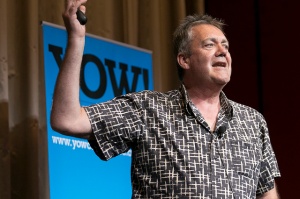 Craig is at Agile 2017 in Orlando, Florida and speaks with David Bernstein, author of “Beyond Legacy Code“, and they chat about agile technical practices:
Craig is at Agile 2017 in Orlando, Florida and speaks with David Bernstein, author of “Beyond Legacy Code“, and they chat about agile technical practices:
- Agile does have something to with software development
- Agile 2017 talk “Create Software Quality
- The real value of Agile is in the technical practices so we can build iteratively, but still very few people practice them
- The future is already here, but it is not very well evenly distributed – the same applies to Agile
- Companies are being consumed by their technical debt and they don’t even recognise it
- What is always cheaper in the virtual domain is building quality
- Continuous Integration makes the most painful thing in software development (integration) our greatest asset – this in turn gives us feedback
- We don’t necessarily know there is a better way to do things – but there is a better way to do things
- We traditionally think of software as a write once event, but it is write many – users want it changed
- We think procedurally so object oriented code often ends up being procedural with a class statement wrapped around it
- Test First Development – very few developers know how to write a good test because they haven’t been taught, it was intended to assist with refactoring
- Studies show about 10% of people follow the Agile technical practices like XP, and only 10% of those are doing it correctly
- The mindset of testing is different to the mindset of coding and they are mutually exclusive (in the same way we need editors when writing a book)
- Refactoring is at two levels because we learn in chunks – we need to do while doing test first as well as in the large
- “The Art of Agile Development” – spend 10% of your time refactoring
- Communication – say what, why and for whom before how – we think in implementation
- CLEAN code – cohesive, loosely coupled, encapsulated, assertiveness and non-redundant
- Need to understand what quality means in software
- Troy Magennis talk “I love the smell of DATA in the morning (Getting started with Agile Data Science)“
TheAgileRevolution-171 (34 minutes)

